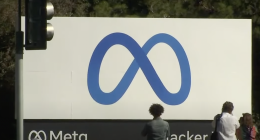Following a user backlash over the initial GPT-5 rollout, OpenAI has reversed its “one size fits all” approach, reintroducing model selection to ChatGPT and giving users more control. In a new post on X, OpenAI CEO Sam Altman announced several key changes, including the restoration of the popular GPT-4o model and the introduction of different “modes” for GPT-5.
The controversy began when OpenAI initially pulled the plug on several older models, including GPT-4o, with the launch of GPT-5. The company’s goal was to simplify the user experience with an automatic router that would intelligently choose the best model for any given query. However, this move was met with widespread criticism from paying subscribers, most of whom felt the new model lacked the familiar personality and conversational style of the earlier models. Many also complained of perceived performance downgrades and a more restrictive feel, which in turn resulted in a wave of subscription cancellations.
“Rate limits are now 3,000 messages/week with GPT-5 Thinking, and then extra capacity on GPT-5 Thinking mini after that limit. Context limit for GPT-5 Thinking is 196k tokens. We may have to update rate limits over time depending on usage. 4o is back in the model picker for all paid users by default. If we ever do deprecate it, we will give plenty of notice. Paid users also now have a “Show additional models” toggle in ChatGPT web settings which will add models like o3, 4.1, and GPT-5 Thinking mini. 4.5 is only available to Pro users—it costs a lot of GPUs,” Altman wrote in his post.
To address these concerns, Altman has confirmed that GPT-4o is available once again, and the chatbot’s model picker is back and more flexible than ever. Going forward, ChatGPT users will be able to choose between three GPT-5 modes – Auto, Fast, and Thinking. Auto is the original system, and Altman noted this is likely the best choice for most users. Fast, as the name says, prioritizes quick, responsive answers, making it ideal for simple questions where speed is more important than in-depth reasoning. Thinking, on the other hand, is designed for more complex tasks, and allows the AI to “think” for a longer period to deliver more comprehensive and accurate responses. The context limit for this mode has been expanded to a massive 196,000 tokens, enabling it to process much longer documents and conversations.
In a major concession to its paid users, OpenAI has also restored GPT-4o to the model picker by default. Altman reassured users that if the company ever decides to deprecate GPT-4o again, it will provide “plenty of notice.” Subscribers can also access other legacy models like o3, 4.1, and a new GPT-5 Thinking mini by enabling an “additional models” toggle in their settings. However, the high-performance GPT-4.5 model remains exclusive to the more expensive Pro tier.
The restoration of the model picker represents a major win for users, restoring a sense of agency and control that was lost in the initial GPT-5 rollout. By giving users the choice between “Auto,” “Fast,” and “Thinking” modes, and by bringing back previous models like GPT-4o, OpenAI is no longer forcing a “one size fits all” experience. This shift allows different user groups to select the best tool for their specific needs — ranging from a developer needing a fast-responding model for code snippets to a creative writer who uses legacy models for their work.
The Tech Portal is published by Blue Box Media Private Limited. Our investors have no influence over our reporting. Read our full Ownership and Funding Disclosure →






